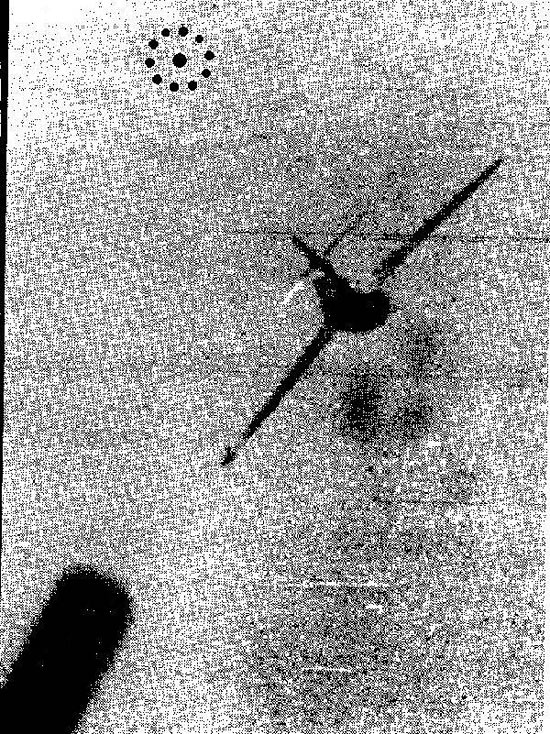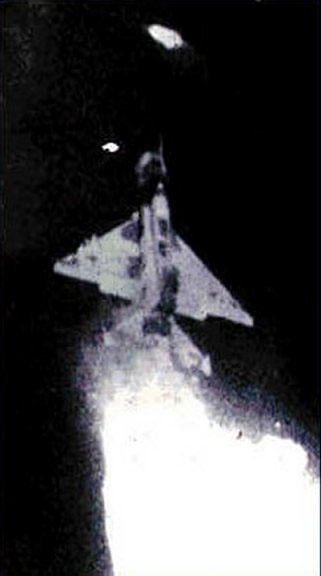If the pilot pushes the rudder while maintaining one G, the nose will yaw in the direction of the rudder application. The reticle will move opposite this movement away from the gun line position. Right rudder…the reticle moves left, and vice versa.

In this manner, we see that reticle movement is strictly a function of aircraft pitch or yaw inputs. The reticle movement has nothing at all to do with the presence or absence of a target. As we explained before, the magnitude of the reticle movement can be controlled by a range input to the gunsight computer (TOF again) but the movement itself is only due to aircraft pitch and yaw forces.
In earlier paragraphs, we covered the theory of how the LCOSS represents an aiming solution. Rather than repeat that, let’s take the idea one step further and talk for a bit about what this disturbed reticle position means to you as the pilot. In doing so, we’ll get a better understanding of some of the limitations of the system.
Let’s recall again what the sight is doing. We are moving our nose…the gun line follows this movement. We use a gyro to display this movement on the combining glass in the form of a pipper that is displaced away from the fixed gun line position (the nose of the airplane) in a direction opposite our plane of motion. The pipper is positioned on the imaginary precession line as a function of range (TOF).
OK. Now pay real close attention to this next part, because it’s the meat of the subject.
Let’s go into a turn and hold a constant airspeed and G. What happens to the sight? It depresses opposite our plane of motion. Where’s the pipper? It’s at the desired range position. Where’s the target? I don’t know…who said anything about a target? With the basic LCOSS, you don’t need a target. The LCOSS computer is not getting any target info because we are not giving it any (other than an assumed range). The LCOSS doesn’t need target info other than a range input. WHY? Because all it is doing is displaying bullet position based upon your plane of motion.
The sight is saying something to you, and here it is:
If you maintain a constant plane of motion and hold your G steady for the required settling time, the pipper will represent where the bullets are NOW that were fired one TOF ago.
Pound the table, people…that statement is the principle of a disturbed reticle LCOSS wrapped up in a neat little ball. The LCOSS is showing you the past, not the future. It’s not telling you that if you fire NOW that you will hit the target…nope, it’s telling you only one thing. If you had fired one TOF ago, you would be now seeing a hit.
Is that 100%, absolutely clear? Don’t go any further if it is not. Re-read this section until you have it down cold.
Disturbed Reticle Tracking Shot
Determining Target Range
All disturbed reticle LCOSS have a range input. For aircraft that do not have a radar (such as WW2 sims), the range input to the ballistics computer is a fixed value. The same is true of modern aircraft when the radar is not operating or the pilot does not have a radar lock on.
Similarly, if the disturbed reticle LCOSS is a funnel display, the sight not only assumes a fixed wingspan, but may also display additional symbology to indicate target range. The Janes USAF ‘Bullet At Target Range’ (BATR) symbol is a good example of this. The following chart shows typical assumed wingspans found in today’s sims.

Consequently, it is the shooter’s responsibility to be at the proper range when using the sight. The easiest way to do this is to use the funnel or reticle match using stadiametric principles.















